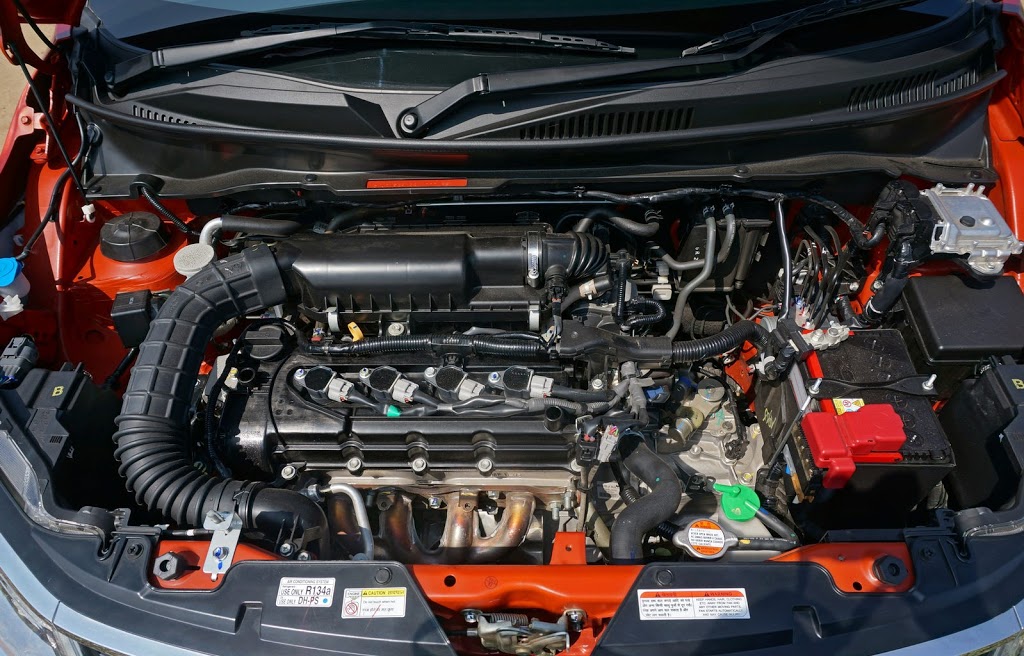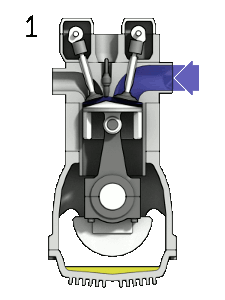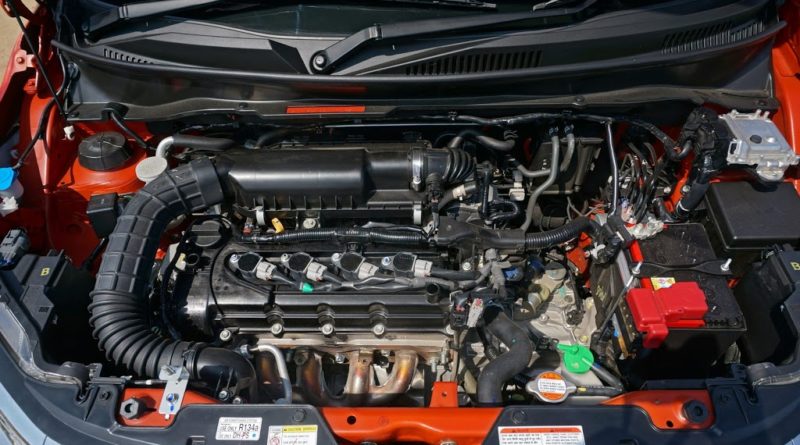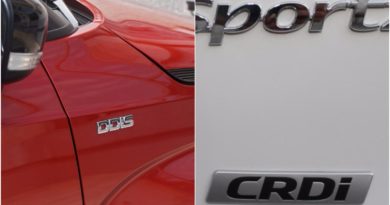Working of petrol car engine
These IC engines which operate on petrol is also known as Spark Ignition (SI) engine as they deploy spark plug to ignite the fuel for achieving controlled combustion.
 |
| Petrol Engine (Image Source: Team BHP) |
Before jumping into working of engine, lets understand two important characteristics of petrol as a fuel which explain why petrol engine design is slightly different to diesel engine-
- Volatility: Petrol is a very volatile fuel, this means it can easily evaporate. This is the reason we always mix the air and petrol before pushing it to combustion chamber. Petrol quickly evaporate and completely mixes with air, this helps in achieving uniform combustion within combustion chamber once mixture ignited via. spark plug.
- Auto-ignition Temperature: Petrol has quite high self ignition temperature, this is why spark plug is required to ignite the air-fuel mixture in petrol engine.
Let’s move on to working procedure of this engine:
As soon as we turn the key to start the engine, starter motor rotates the engine flywheel connected to crankshaft which in turn bring the reciprocating (vertical) motion for pistons inside the cylinder. This kicks in the 4 stroke mechanism as follows –
- Intake stroke: Air-petrol mixture comes in to the combustion chamber. In older petrol engines, carburettor was used to mix the air and gasoline (petrol) then was sent to combustion chamber. Now, In modern engines fuel injector is used to inject gasoline directly inside the intake manifold near cylinder’s Intake valve to have better control over the fuel consumption, this technology of modern engine is known as Multi Point Fuel Injection (MPFI). This technology has lot more benefits which we will discuss later on.
- Compression stroke: During this stroke, air-gasoline mixture is compressed in order to achieve required temperature inside the combustion chamber. Towards the end of this stroke, spark is generated from spark plug to ignite the mixture and it leads to uniform combustion of mixture.
- Power stroke: Due to combustion of air-fuel mixture, lot of gases are produced and this pushes the piston downwards resulting in generation of mechanical power which passes onto crankshaft as rotatory motion via. piston’s reciprocating motion. Rotatory motion from crankshaft is then passed to the wheels via. gearbox.
- Exhaust stroke: Post completion of power stroke, piston moves up and removes the residual gases out from the combustion chamber via. exhaust valve. This clear-up the combustion chamber for next cycle to commence.
 |
| 4-Stroke of Petrol Engine (Image Source: Wikipedia) |
Important point to be noted in petrol engine – compression ratio, this is kept somewhere between 8-10 which is lower than diesel engine. Reason behind low compression ratio in petrol engine is to prevent knocking i.e, auto-ignition of air-fuel mixture inside combustion chamber apart from ignition occurring from spark plug. This can cause severe damage to engine cylinder as well as piston which is not good for engine life.
Below are the benefits of petrol engine’s Multi-Point Fuel Injection System:
- Better atomization of fuel
- Lower emission of pollutant
- Rapid response time with respect to the changes
- Improved fuel efficiency




